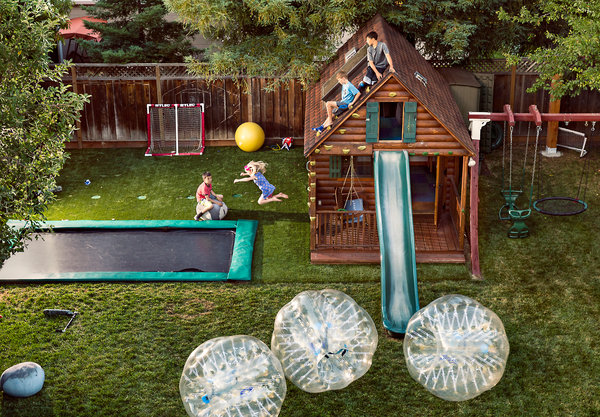Have you seen the movie, Stand By Me? If you’re the parent of a male child, you MUST see that movie. It’s the finest portrayal of what the life of 12-year-old boys would be like if they were allowed to decide. The movie takes place in 1959, and in that year, I was the same age as the younger boys in the movie. No, I never did anything exactly like that, but I remember the freedom that we had to go places with other kids. It was that freedom that enabled us to learn to solve problems, to negotiate with other kids, and to find out what we were good at, and what we weren’t.
Would I worry if my 12-year-old son had taken a trip into the woods with three other boys? Absolutely. However, I’d be also very proud of his ability to manage such a trip. My son had 10 acres of woods with a stream on one side in which to play. From the time he was six, the only rule was that he had to be within earshot of a whistle from our back door. Yes, he could have fallen in the creek and hit his head and drowned, but my husband and I decided that we wanted to give him the opportunity to cope with life rather than prevent him from taking reasonable risks.
Several years ago, I was talking with a university professor who told me that he lived in a cul-de-sac that had a large tree in the middle. The tree belonged to the children in the neighborhood and adults were not allowed in it. At any time when the children were not in school, there were likely to be a variety of the neighborhood kids playing in and around the tree. The kids were a variety of ages, and they all learned to get along. Older kids watched out for younger kids, and any kid who lacked the ability to “play well with others” was not invited to join in the fray. There was no need for adults to monitor the activity, because the parents trusted the children to do things right. The important point was that the children were in full view of everyone, and yet left alone.

A father in California has taken this notion to another level and provided a house where children are free to play. Mike Lanza has developed a neighborhood play space, what he calls a “Playborhood.” I have to admit that I’m not entirely comfortable with children playing on the roof of the house, as Lanza allows, but the rest of his play space sounds just fine – and pretty terrific, if you’re a kid.
Several years ago, I read of a play space created by making small doors in the communal fences in a suburban area. There were about six houses that backed up to each other and the children could enter other children’s yards by going through the little doors. If a child wanted to play, she would simply choose a door in her fence and see if there was a child in the neighboring yard that wanted to play. This allowed children the opportunity to play with each other without adult intercession, or supervision.
The concern of allowing this free play is two-fold.
One is that the modern child, who is so addicted to screens, will not want to engage in this sort of free play. However, one reason that the child spends so much time in the screen world may be because his own real space is so boring or totally adult-driven. Many children only play in adult created worlds – for example, they only play soccer on a team, never in a pick-up game in a back yard. Computer games are all written and devised by adults. There seems to be a need by parents to control their children, which can result in children who have no original thoughts, or ability to self-manage.
The second concern is that children need adults around to make sure that no one hurts another child or engages in play that excludes others. Children left by themselves have good ways to deal with these sorts of behaviors and research is clear that children who play regularly in mixed-age groups learn to get along with each other. As it is now, when a child is not comfortable with the actions of another child, they have learned to go and whine to their parents. Then the parents sail in to fix the issue. The result is that the child grows up to lean on others to solve problems rather than learning to stand up for him or her self. What we have done is taught children to be offended by “microaggressions” rather than learning to say, “hey, don’t say that, it’s rude.”
Don’t get me wrong, I know that allowing children free rein to play with others may not always have great results. That’s what Band-Aids and knee patches are for. But the child who never learns to stand up for himself will not be able to do so later in life and will remain dependent on others to referee interpersonal exchanges.
Another important point raised in the article was how happy the children were in Lanza’s Playborhood. They were not always giggling, but they learned to manage themselves and to get out of a situation if they were not happy.
The rate of teen suicide is rising. and while I don’t think that free play is going to solve that problem, it will help teens learn to solve problems. Most people who commit suicide believe that they have no options and that their life is doomed. The child who has learned to cope by managing his own life is likely to understand that there are always options if you just consider what they might be.